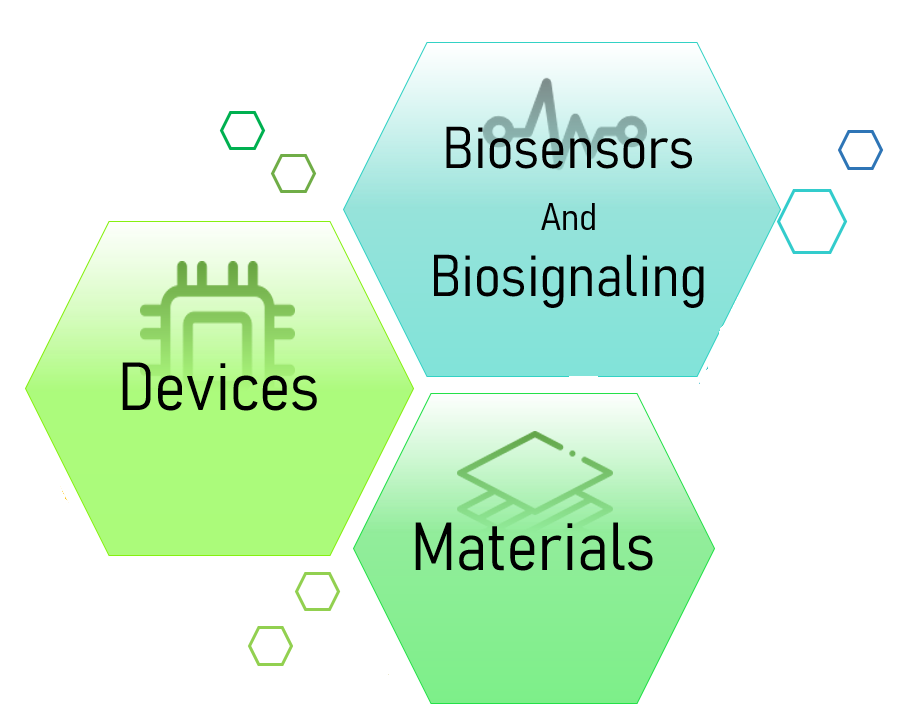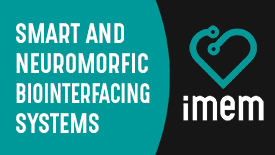Our research group's activities focus on developing interfaces and systems based on them for the realization of bioelectronics devices and systems of interest for biotechnologies.
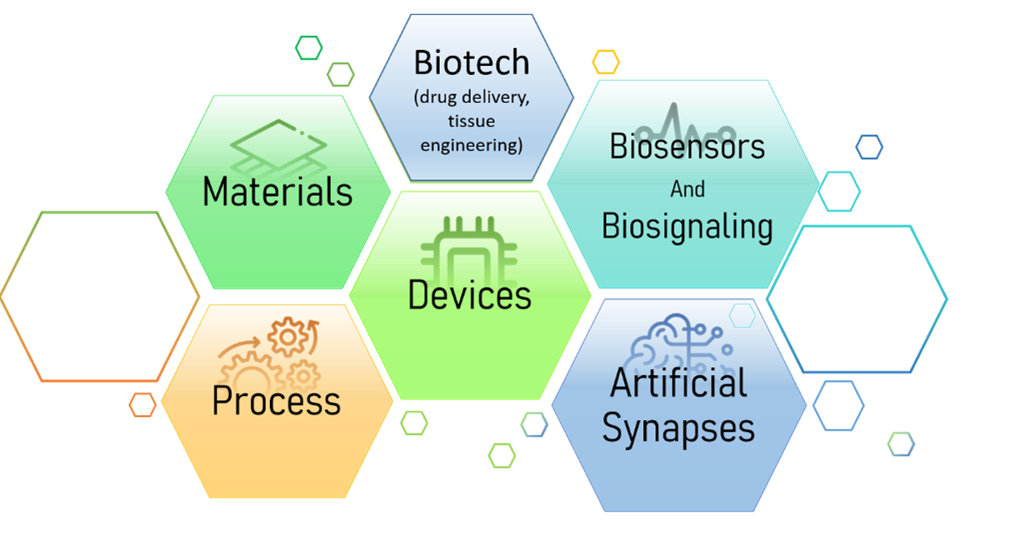 Our approach to bioelectronics is based on the development and study of materials (mainly organic but also 2D materials), innovative fabrication processes such as direct writing printing techniques and extruder-based methods, and devices and systems inherently equipped with customized properties. In particular, we develop systems capable of intelligent bio-signal transduction and biomolecule and biomarker monitoring, as well as implementing artificial synapses that fully emulate natural ones. While each of these topics is an active area of research within our group, their integration into intelligent systems capable of fully neuromorphic responses and actions represents one of our main challenges.
Our approach to bioelectronics is based on the development and study of materials (mainly organic but also 2D materials), innovative fabrication processes such as direct writing printing techniques and extruder-based methods, and devices and systems inherently equipped with customized properties. In particular, we develop systems capable of intelligent bio-signal transduction and biomolecule and biomarker monitoring, as well as implementing artificial synapses that fully emulate natural ones. While each of these topics is an active area of research within our group, their integration into intelligent systems capable of fully neuromorphic responses and actions represents one of our main challenges.
Indeed, the long-term global goal of our group is to develop systems that acquire information (visual, acoustic, chemical, tactile, etc), process it, including learning mechanisms (which necessitates hardware-based artificial neural networks where storage and processing occur within the same elements), and generate signals to actuate elements or direct medical therapeutic actions. This approach also incorporates artificial intelligence protocols, such as machine learning and big data analysis, with the aim of ensuring environmental integration of the developed devices in alignment with IoT principles.
In the field of biotechnologies, always starting from materials with a particular focus on biopolymers, we implement:
Drug delivery systems based on a combination of biomaterials and innovative fabrication techniques, with a direct focus on mechanisms for the release of micro-nano containers and specific opening mechanisms, such as stimulus-triggered release through electrical activation.
Tissue engineering systems, including sensorized prostheses, scaffolds for tissue regeneration, and wound healing systems.
Our research perspective is pursued through the following three specific research activities:
-Neuromorphic systems and artificial intelligence
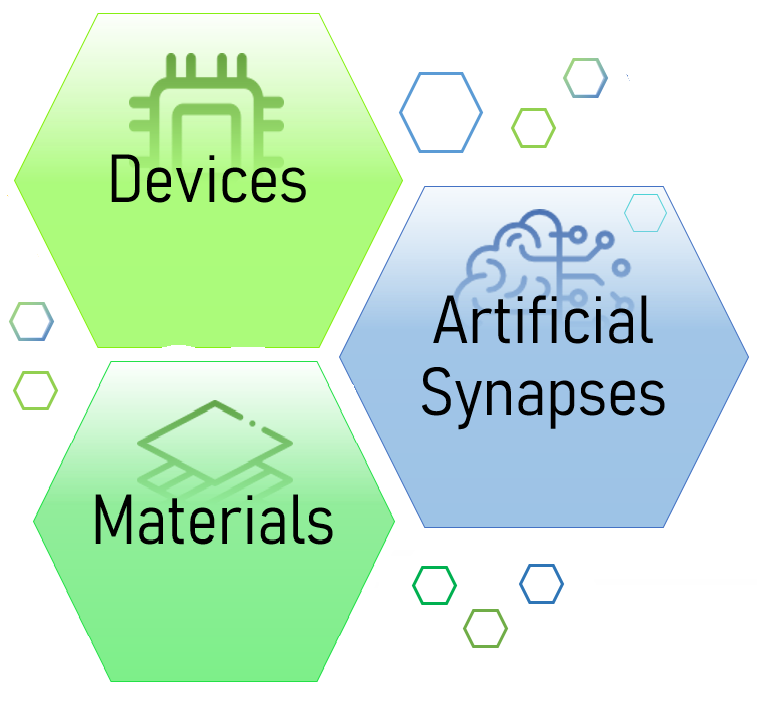 | The activity is based on a new element, Organic Memristive Device (OMD), that mimics several important properties of natural synapses. In particular, it was used as key element for the artificial implementation of bio-inspired circuits and systems, allowing associative learning at the hardware level; for the realization of single and double layer perceptrons; first steps towards the synapse prosthesis; realization of self-assembled networks with stochastic architecture and very large integration level, allowing memorizing and processing of the information. |
-Biomaterials and Biotechnologies for drug delivery and tissue engineering
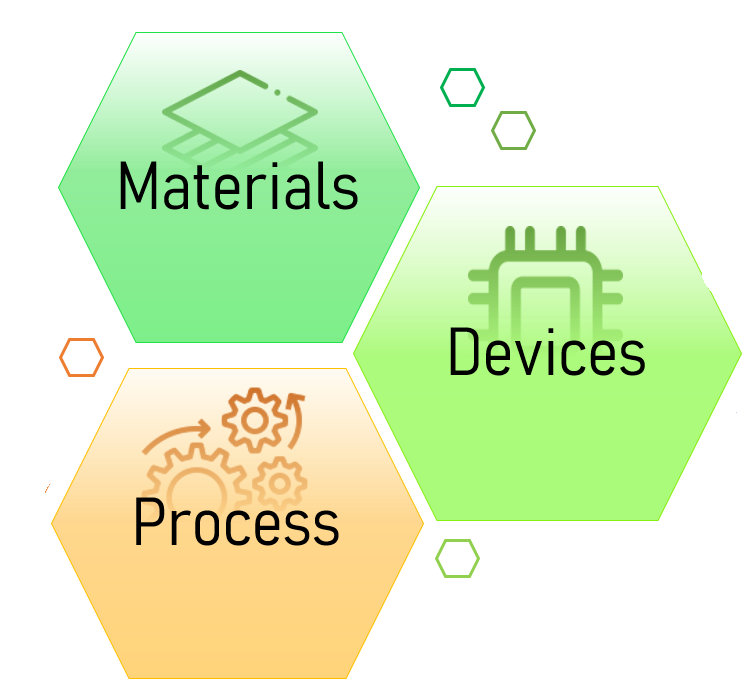 | This activity is aimed at developing applications of interest in the field of Biotechnology and related multifunctional biomaterials, which are also suitable for the development of bioelectronic devices and sensors. Research activities in Biotechnology focus on two application areas: drug delivery and tissue engineering. |








